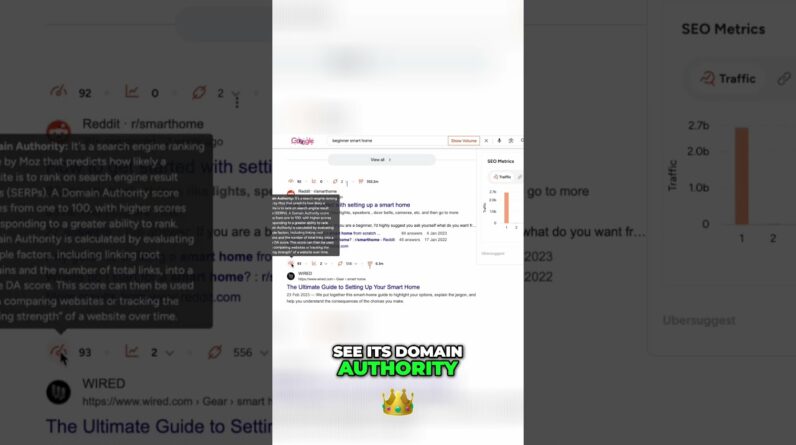
Welcome to our blog post where we delve into the fascinating world of mobile first indexing. Join us as we explore the importance of this indexing method and guide you on how to confirm if your site has made the successful transition to the mobile first index. So, let’s dive in and discover how mobile first indexing can elevate your website’s performance in this modern digital landscape.
Introduction
In today’s digital age, where smartphones have become an integral part of our lives, it is essential for businesses to ensure that their website is optimized for mobile users. Mobile SEO, also known as mobile search engine optimization, is the process of optimizing websites to cater specifically to mobile users and devices. With a significant portion of internet traffic coming from mobile devices, ignoring mobile SEO can be detrimental to a business.
Why is Mobile SEO Important?
Engaging with a Specific Audience
Mobile users have different needs and behaviors compared to desktop users. They often have limited time and are looking for quick and easily digestible information. By prioritizing mobile SEO, businesses can engage with this specific part of the audience and provide them with a seamless browsing experience.
Meeting User Expectations
In today’s fast-paced world, users expect websites to load quickly and be easy to navigate on their mobile devices. If a website is not optimized for mobile, it might appear cluttered, and users may struggle to find the information they need. This can result in a poor user experience and increased bounce rates.
Loss of Customer Engagement and Potential Revenue
A website that is not mobile-friendly can lead to a loss of customer engagement and potential revenue. Users are more likely to abandon a website if it takes too long to load or if it is not optimized for their mobile device. Additionally, mobile users are more likely to make impulsive buying decisions, and if they cannot easily complete a purchase on a mobile website, businesses may miss out on potential sales.
The Priority of Mobile SEO
The priority of mobile SEO varies depending on the audience and the business’s vertical. B2B businesses, for example, may prioritize desktop conversions since their target audience is more likely to access their website through a desktop device. On the other hand, B2C businesses, especially those in industries like fashion or tourism, can greatly benefit from mobile SEO. These industries often have a younger target audience that heavily relies on mobile devices for browsing and shopping.
The reliance on mobile audiences also varies by geography. Some countries, like India and South Africa, have a higher percentage of mobile web traffic compared to desktop traffic. SEO professionals should take into account these factors and assess the scale of impact and return on investment before embarking on mobile SEO optimizations.
How to Confirm That Your Site Is in the Mobile First Index
With the introduction of mobile-first indexing by search engines, it has become essential for businesses to confirm whether their website is in the mobile-first index. Here are a few steps to help you confirm:
-
Check your website’s mobile-friendliness: Use Google’s Mobile-Friendly Test tool to determine if your website is mobile-friendly. This tool will provide suggestions on how to improve your website’s mobile experience if needed.
-
Use Google Search Console: Access your website’s Google Search Console account and look for any messages or notifications regarding mobile-first indexing. Google often sends notifications to webmasters if there are issues with mobile indexing.
-
Review Mobile Usability Reports: The Mobile Usability report in Google Search Console provides insights into any mobile usability issues detected on your website. Addressing these issues promptly will enhance your chances of being included in the mobile-first index.
-
Submit a Mobile Sitemap: Ensure that your website has a mobile sitemap that includes all the relevant mobile pages. Submit this sitemap to Google Search Console to help search engines understand the structure and content of your mobile website.
-
Monitor Search Engine Rankings: Keep an eye on your website’s search engine rankings and organic traffic. If you notice a significant drop in rankings or traffic from mobile devices, it could be an indication that your website is not included in the mobile-first index.
Conclusion
Mobile-first indexing has brought mobile SEO to the forefront of digital marketing strategies. Businesses need to prioritize optimizing their websites for mobile users to provide a seamless browsing experience, meet user expectations, and maximize customer engagement and potential revenue. By following the steps outlined above, businesses can confirm whether their website is in the mobile-first index and take necessary actions to improve their mobile SEO efforts.
FAQs (Frequently Asked Questions)
-
What is mobile SEO?
Mobile SEO is the process of optimizing websites to cater specifically to mobile users and devices. It includes technical SEO optimizations, content creation, and user experience considerations. -
Why is mobile SEO important?
Mobile SEO is important because it helps businesses engage with a specific part of the audience, meet user expectations, and prevent a loss of customer engagement and potential revenue. -
Who should prioritize mobile SEO?
The priority of mobile SEO varies depending on the audience and the business’s vertical. B2C businesses like fashion or tourism can greatly benefit from mobile SEO, while B2B businesses may prioritize desktop conversions. -
How can I confirm if my site is in the mobile-first index?
To confirm if your site is in the mobile-first index, you can check your website’s mobile-friendliness, use Google Search Console, review mobile usability reports, submit a mobile sitemap, and monitor search engine rankings and traffic. -
What should I do if my website is not in the mobile-first index?
If your website is not in the mobile-first index, you should focus on optimizing your website for mobile users by improving mobile-friendliness, addressing mobile usability issues, submitting a mobile sitemap, and monitoring search engine rankings and traffic.






